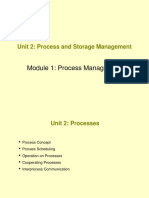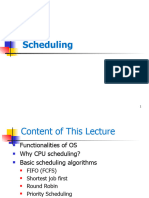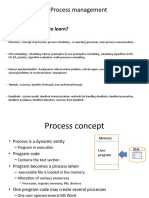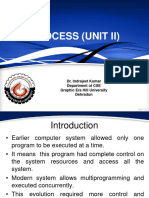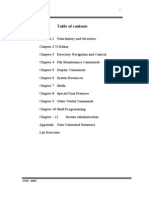0% found this document useful (0 votes)
8 views7 pages(OS) Operating Systems 1 - Processes
The document provides an overview of operating systems, focusing on processes and their management. It discusses the functionalities of an OS, types of multiprogramming, process creation using fork(), CPU scheduling, and various scheduling algorithms. Additionally, it covers metrics related to processes, the process lifecycle, and the importance of efficient CPU utilization.
Uploaded by
ravitejaakula4911Copyright
© © All Rights Reserved
We take content rights seriously. If you suspect this is your content, claim it here.
Available Formats
Download as PDF, TXT or read online on Scribd
0% found this document useful (0 votes)
8 views7 pages(OS) Operating Systems 1 - Processes
The document provides an overview of operating systems, focusing on processes and their management. It discusses the functionalities of an OS, types of multiprogramming, process creation using fork(), CPU scheduling, and various scheduling algorithms. Additionally, it covers metrics related to processes, the process lifecycle, and the importance of efficient CPU utilization.
Uploaded by
ravitejaakula4911Copyright
© © All Rights Reserved
We take content rights seriously. If you suspect this is your content, claim it here.
Available Formats
Download as PDF, TXT or read online on Scribd
/ 7




